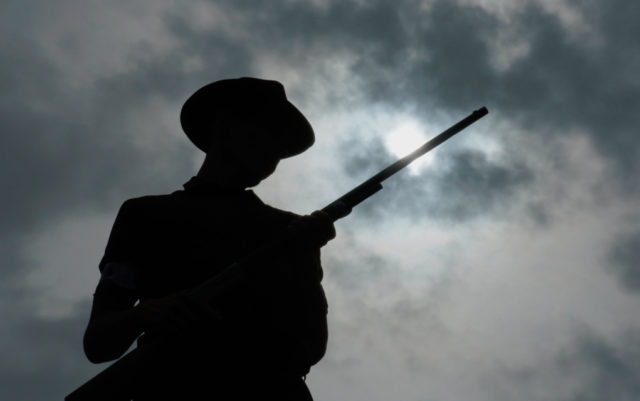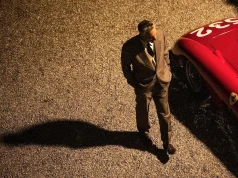
July 12, 1917, Bisbee, Arizona: Cochise County Sheriff Harry Wheeler and a deputized posse nearly 2,000 people strong rounded up 1,300 striking miners — many of them immigrants — and sympathetic residents, loaded them into cattle cars at gunpoint and shipped them 200 miles out of town. Though they were peaceful strikers, Walter S. Douglas, president of the Phelps Dodge mining firm, just wanted them out of sight and out of mind. “You cannot compromise with a rattlesnake,” Douglas said of the strikers and, probably without realizing it, himself.
In a broader sense, the story of the 1917 Bisbee Deportation is a familiar one, but in the hands of director/editor Robert Greene, Bisbee ’17 becomes wholly original and profoundly urgent.
Told in six chapters, Bisbee ’17 is a documentary/narrative hybrid addressing the past with a knowing eye on the present. Greene spends his time exploring the history of Bisbee and the events leading up to, and including, the deportation, as well as familiarizing us with the residents of Bisbee in 2017; specifically, the ancestors of those who found themselves on both sides of the tragic event.
Greene takes the time to talk to them, to hear their stories and to see what they are doing to commemorate the centennial. One woman, Laurie McKenna, makes penny rubbings on cards with the names of those deported. A community group gathers weekly to discuss what history they’ve unearthed. Actors, professional and amateur, prepare themselves for roles in the movie’s staged re-enactment of the deportation. For these interviews, Greene doesn’t merely cut from one subject to the next. Instead, he introduces most from a distance, allowing their whole body to fill the frame while they silently stare at the camera long enough for us to acknowledge that these human beings carry a history that must be understood.
Not an easy feat considering Greene asks you to consider both sides of the labor dispute. But with stunning cinematography from Jarred Alterman, who captures the town and residents of Bisbee in sumptuous widescreen photography, Bisbee ’17 marries a dark past with virtuosic story-telling. Rare are documentaries this compelling.
Which brings us to the movie’s climax: the re-enactment of the 1917 Bisbee Deportation. American history is pocked with atrocities like this: moments where fear gave way to anger, and xenophobia morphed into the ugly face of vigilante justice.
We watch as the ancestors of Bisbee recreate that dark day for Greene’s cameras. It’s tough stuff, and not just for us watching, but for those participating.
“Back in those times, they had different feelings,” one re-enactor tells the camera, holding back tears. “But with today’s ideals, it shouldn’t be happening.”
As a member of the posse, he is the one with a gun, just like his ancestor 100 years before. As he talks to the camera, you can see him grapple with that reality: he is both a descendant and inheritor of this brutality.
“The world’s changed a lot since then,” he says, unconvinced. His face betrays his words: It’s just as wrong then as it is now.
The world hasn’t changed one damn bit.
On the Bill: Bisbee ’17. 7:30 p.m. Oct. 10-12, International Film Series, Muenzinger Auditorium, Boulder University of Colorado Boulder, 1905. Colorado Ave., internationalfilmseries.com














